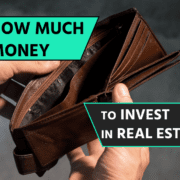Why Gap Funding and Bridge Loans Will Grow Your Real Estate Business
The difference between gap funding and bridge loans – and why it matters to your real estate investments.
Gap funding, bridge loans – they sure sound similar. What’s the difference? How are each of these types of funding going to improve your business?
Both gap funding and bridge loans have the power to smooth out your real estate career and grow it to new heights.
Here’s what you’ll need to know.
Bridge Loans vs Hard Money Loans
Some lenders will use these terms interchangeably. After all, they are similar concepts, and lingo varies from lender to lender. But it’s important to know the actual definitions so you understand these terms if a lender uses them this way.
Though similar, there are differences to know in a bridge loan vs hard money loan.
What is a Bridge Loan Used For?
A bridge loan is a very short-term loan – even shorter than the typical hard money loan. It helps you bridge the space between one project and another.
Let’s say you’re just finishing up a flip. The house is on the market, buyers are showing interest, and now you’d like to get another property bought so you can jump right in to your next flip.
Typically, you use the money from selling one property to buy the next one. But if you want to get that next property started before the current one is sold? That’s where a bridge loan comes in.
A true bridge loan covers up that gap between projects. It gives you the money to close on a new property before the first one is completely sold.
A bridge loan lets you overlap from an old project to a new one.
How is a Bridge Loan Different from a Hard Money Loan?
A hard money loan is longer and broader than a bridge loan.
- The average bridge loan lasts 30 to 45 days. Hard money loans can last up to a year or longer.
- Bridge loans get you from one property to the next. Hard money focuses more on a single project.
- Bridge loans are paid off when your old property sells. Hard money loans are paid off when you refinance or sell the property the loan was originally for.
- A bridge loan is used as temporary funds to close on a house. A hard money loan can be used as a more general budget for a purchase. Many come with the option for escrows to fix up the property over time.
Certain lenders do pure bridge loans, while others lump it all under “hard money.” Keep in mind as you’re learning the real estate investment game that bridge loans vs hard money loans serve different purposes.
3 Ways to Use a Hard Money Bridge Loan
Some lenders might talk about hard money and bridge loans as the same – that’s okay. But it will benefit you to know the particular uses for bridge loans.
The basics of a bridge loan are that they’re used to bridge you from one project to the next. Then you pay the loan off when the first property sells.
1. Bridge Loans to Get from One Property to the Next
The most common use of bridge loans in the hard money space is to bridge you from one property to the next.
When you have a flipped property that’s almost complete – the work is done, it’s under contract, it’s almost sold – you might want to get started on your next project without waiting for the official close.
The problem is: How do you buy a new property without the money from selling the old one? A hard money bridge loan solves that problem.
A bridge loan allows you to use the property that’s about to be sold as collateral for a new loan for a new property. Once the first property sells, some of that money is used to pay off the bridge loan. Then you own the new property free and clear.
This way of using a bridge loan is especially useful if you have a lot of cash put into one property. You don’t have to wait to get that money back after selling to start on your next investment.
2. Bridge Loans to Cover a Down Payment on a New Property
You can use an advance of the equity on a current property as the down payment for the new property through a bridge loan.
Maybe you’re about to sell one property. And you’re able to get financing for your next one… Except you can’t cover the down payment.
In this case, you’ll probably use a bridge loan in conjunction with a hard money loan. The hard money loan covers the property cost, and the bridge loan covers the remaining down payment cost. Then that bridge loan gets paid off when you sell the old property.
3. Bridge Loans to Close Fast
Another way you could use a bridge loan is to close faster on a new property.
Maybe you plan on using more traditional financing through a bank, but the bank loan wouldn’t be ready in time. You can use a short-term bridge loan.
This loan bridges you from the closing to the refinance. A bridge lender will help you with the initial purchase. Then once your bank (or hard money) loan is completely ready – usually several weeks or a month later – that bank loan pays off the bridge loan.
Bridge Loans in the Hard Money World
Typically bridge loans are used for 3 situations in real estate investing:
- When you’re buying a new property and already have one listed for sale
- When you need to cover down payment on a new property
- When you find a great deal but your bank’s financing won’t be ready in time.
Gap Funding for Real Estate Investors
So, bridge loans are different from hard money loans. But where does gap funding fit into the mix for real estate investors?
Bridge loans do bridge “gaps” in your investments. But “gap funding” is something different.
Gap funding is the small amounts that investors need throughout the course of a project in addition to the bigger loan. Examples of common gap funding situations are:
- Down payments
- Contractors and other fix-up costs
- Carry costs before renting or selling
- Interest, insurance, and other payments not included in the original cost of the property.
A bank or hard money lender will be funding the majority of your project. And when you don’t have other properties, you can use a lien (like you would for a bridge loan). But without another property, you need gap funding to cover the little costs that slip through the cracks of your primary financing.
Gap funding for real estate investors can be a loan that’s anywhere from $10,000 to $100,000. Whatever costs your primary loan and your own cash won’t cover will need to be filled by a gap lender.
Where Do You Find a Gap Lender?
Gap lenders aren’t exactly like hard money lenders. You can’t walk into a gap lending institution and ask for a loan. So where do you find a gap lender?
Who are Gap Lenders?
There are some hard-money-style lenders out there that focus on gap funding, but they’ll charge you a 12 – 20% interest rate. The best place to find reasonable gap funding is with ordinary people.
Traditionally, gap lenders are people you meet – family, friends, people in real estate groups, or anyone with money who wants to dip a toe into real estate investing. These people have a couple tens of thousands of dollars they’d like to make a better return on.
Half the people in real estate groups want to be real estate investors, but don’t want the burden of managing an entire project. Gap funding is secured with a lien against the property, so lending is safer than investing.
Gap lenders tend to have around $50,000 to $60,000 they’d like to put toward real estate. Not enough to do a full transaction, but perfect to fill the gaps your financing will leave on your flip.
Where Can You Go to Find Gap Lenders?
Get involved in the real estate community, and keep your eyes and ears open. Go to meet-ups. Talk to people with money.
A lot of how to find gap lenders boils down to: How do you convince them to give you money? How do you set up the lending relationship?
If you have questions on how to find and approach gap funders, you can watch these videos, use our OPM checklist, or reach out at HardMoneyMike.com.
Where Do You Find a Hard Money Bridge Loan Lender?
How about bridge lenders? Does every hard money lender do bridge loans?
A lot of people use the term bridge loan interchangeably with gap funding or hard money, but a true bridge loan is slightly different. They’re shorter-term than a hard money loan, and they’re typically less expensive because of that.
Which Hard Money Lenders Do Bridge Loans?
To find these quick, short loans, a small local lender, like Hard Money Mike, will be your best and fastest option. Smaller hard money lenders like working with investors who provide good, safe returns. Bridge loans do exactly that.
Bigger hard money lenders do bridge loans, too. But they may take up to four weeks to close, which often defeats the purpose of true bridge lending.
You can also get bridge loans from some banks. Not big, national banks, but many local banks and credit unions who work with real estate investors may do bridge loans, too. Banks usually offer the cheapest bridge loans, but can take 3 – 4 weeks or longer.
Ask around to lenders you know to find out their pricing and see if their bridge loans are worth it. You can use our free loan optimizer to find out if you can get a good deal on bridge loans near you.
Where to Go From Here
The best deals in real estate investment close quickly. Gap funding and bridge loans are important tools to have in your belt so you can do this.
Gap funding and bridge loans are useful for beginner and experienced investors alike. They can enable you to work on multiple projects at once and increase cash flow.
There’s money in the money. If you understand the money side of real estate, your business rises to the next level.
We can always help with your real estate investment education.
Watch more about funding advice with these videos.
Email or message us anytime at HardMoneyMike.com.
Happy Investing.











Leave a Reply
Want to join the discussion?Feel free to contribute!